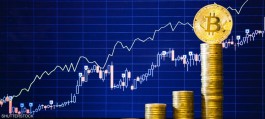Gold prices rose to a nine-week high as disappointing U.S. factory data and weak consumer sentiment bolstered bets on a possible interest rate cut later this year.
Signs of an economic slowdown have bolstered expectations that the Federal Reserve will need to cut borrowing costs to help support the economy. Higher interest rates are typically a negative for non-yielding bullion.
The precious metal has largely held above the key $2,000 level since mid-December amid bets that the Federal Reserve will shift to monetary easing. That view has not changed despite diverging expectations about the timing and size of a rate cut by the U.S. central bank amid recent mixed U.S. economic data.
Impact of US data
Data released on Friday showed that a measure of U.S. factory activity contracted at a faster pace in February as orders, output and employment all fell, suggesting that manufacturing is struggling to gain momentum.
Separate data showed U.S. consumer confidence fell in February for the first time in three months as current and forecast views of the economy deteriorated. Treasury yields fell, helping bullion rise as much as 2.1%, its biggest intraday gain since Dec. 13.
Statements by a number of Federal Reserve officials also affected bond yields, which in turn boosted bullion.
Federal Reserve Governor Christopher Waller said he hopes the central bank will increase its holdings of short-term Treasuries. Also speaking Friday, Chicago Fed President Austan Goolsbee told CNBC he believes the federal funds rate is “totally capped.” Separately, his Richmond counterpart Thomas Barkin said markets are pricing in fewer rate cuts in response to economic data. Dallas Fed President Lori Logan said it would be appropriate to start slowing the pace of its balance sheet reduction.
Spot gold rose 2% to $2,088.11 an ounce on Friday as of 1:44 p.m. on the New York Stock Exchange, on track for a second straight weekly gain. Silver, platinum and palladium also rose.




































